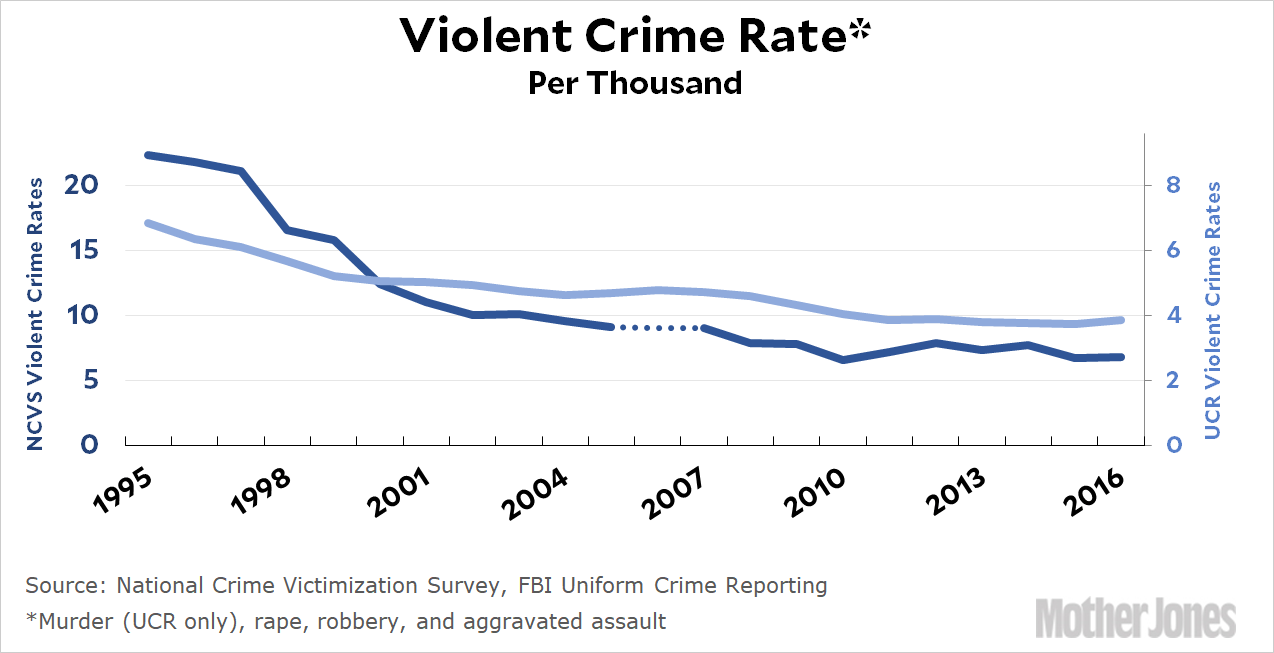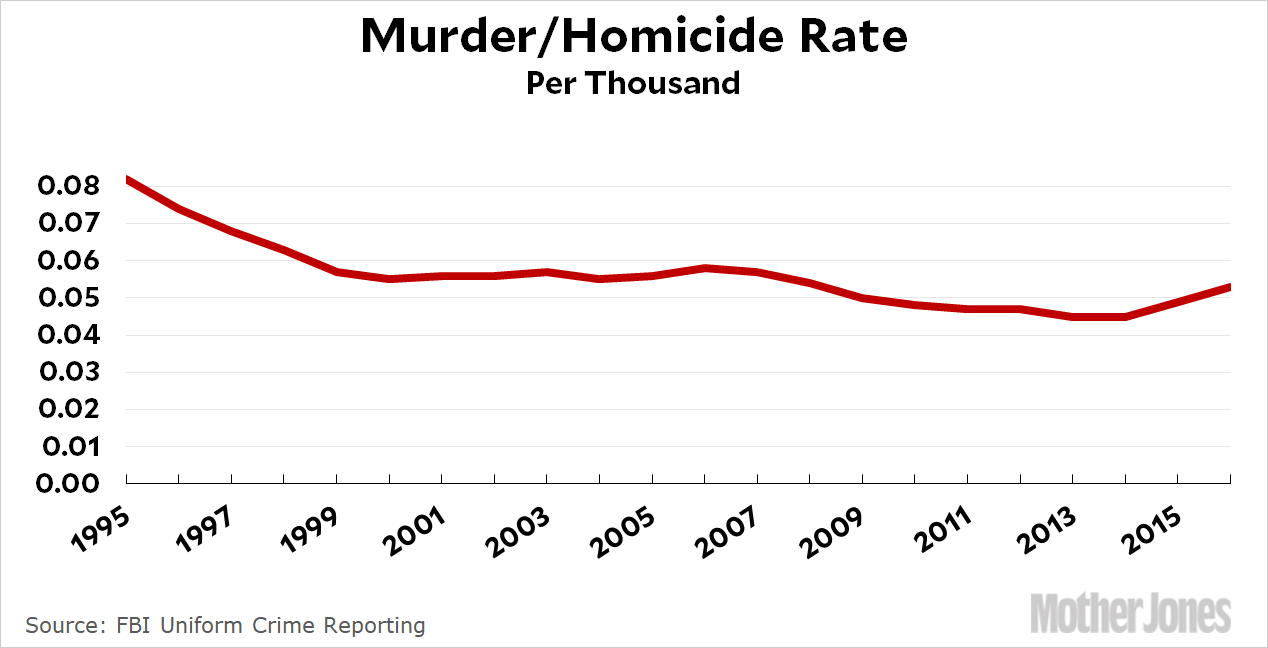Hey, remember the great crime surge of 2015-16? It was all about the “Ferguson Effect,” as police officers became afraid to do their jobs properly for fear of being unfairly dragged into court by lefty activists. Hoodlums all realized this meant they could have a field day, and crime soared.
Well, about that. Actual data for violent crime is now available through 2016, and at first it seemed like there really was a big increase in violent crime last year. But as Keith Humphreys pointed out today, this turned out to be mostly a mistake caused by a decennial redesign of the NCVS crime survey that added a whole lot of new counties. The folks at the Bureau of Justice Statistics explain:
When the 2016 NCVS data collection was complete, a comparison of the 2015 and 2016 victimization estimates showed that the violent and property crime rates had increased. Given recent patterns in NCVS data, these increases seemed too large to be a result of actual growth in crime, suggesting that the sample redesign may have affected the victimization rates. To better understand these results, the 2015 and 2016 victimization rates for new and continuing sample counties were examined separately. These comparisons showed that from 2015 to 2016 there were no statistically significant differences for continuing sample counties in the rates of total property crime, total violent crime, and total serious violent crime.
Oh. Good to know. Of course, there’s also the FBI’s Uniform Crime Reporting, which relies on crimes reported to police. Here’s both of them:¹

As you can see, there was a violent crime increase in 2016, but it was basically noise level: UCR pegs it at 3.4 percent and the corrected NCVS report pegs it at 1.5 percent. And in the two year period 2015-16, there was essentially no increase at all.
Before you get too comfortable, though, there are a few cities that really have seen significant increases in their murder rates. A survey of crime victims obviously can’t include murder, so we have only one source for this data, the FBI’s UCR. Nationally, it reports that we saw an increase in the murder rate of 9 percent in 2015 and then another 8 percent in 2016:

The good news, such as it is, is that this isn’t truly a national rise. The big increases are limited to about half a dozen large cities, and those are big enough to affect the national rate.
Bottom line: There are a handful of big cities that have seen a big increase in murder rates. Aside from that, however, violent crime has been flat or down for the past couple of years. In the post-Ferguson era, there simply hasn’t been a surge in violent crime.
¹NCVS data through 2015 here. NCVS comparable data for 2016 here. UCR data through 2014 here. UCR data for 2015-16 here.













